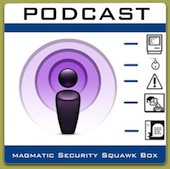Researchers ByPass Keychain on iOS device
 Thursday, February 10, 2011 at 09:04AM
Thursday, February 10, 2011 at 09:04AM Researchers from Fraunhofer SIT have demonstrated how to bypass the KeyChain on an iOS device. This is a local attack, not remote, but has implications for users who's devices are lost or stolen.
- They Jailbreak the phone with tools already available to gain access to the system.
- Copy the KeyChain access script to the file system.
- Execute the Script which returns the passwords it has been able to find.
Not all passwords are broken but key ones for online account and corporate network access information can be broken in under six minutes.
For a video on how they did it click here.
If you lose your iPhone or plan to retire it keep this in mind.
- Do a Hard Factory Reset.
- Clear out all data.
- Use Mobile Me Find My iPhone in the event that it is lost and erase it fist. (iTunes should have a backup.)
If you are an organization you should have a phone/PDA retirement policy.
 Condition:GREEN in
Condition:GREEN in  Apple,
Apple,  Poof of Concept,
Poof of Concept,  Vulnerability,
Vulnerability,  iOS4
iOS4 









